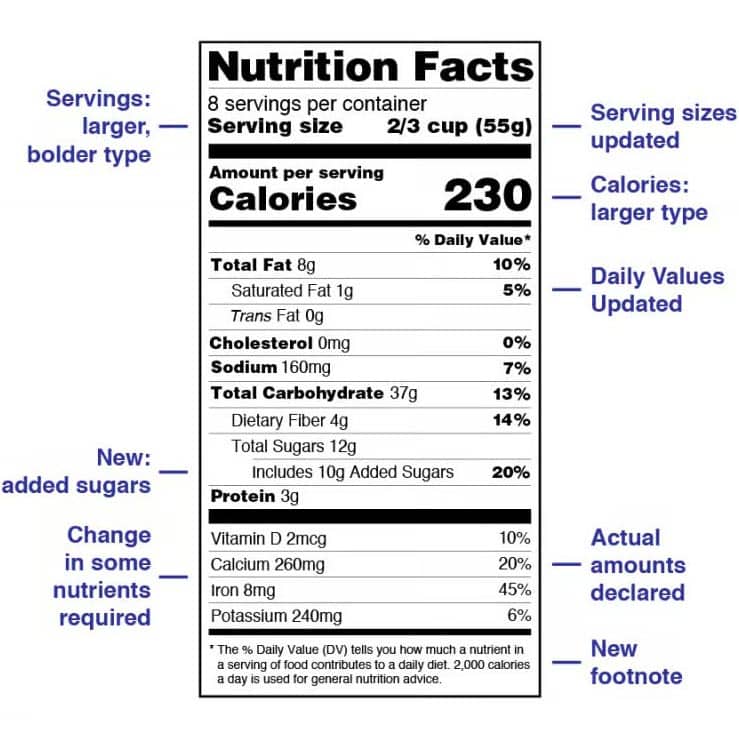How to create a nutrition facts label for a beverage.

To create a nutrition facts panel for a beverage, you need to consider the specific nutritional information of the product. The nutrition facts panel provides details about the various nutrients present in the beverage and their respective quantities.
Here’s a step-by-step guide on creating a nutrition facts panel:
- Identify the required nutrients: Start by determining which nutrients are mandatory to include in the nutrition facts panel. These generally include calories, total fat, saturated fat, trans fat, cholesterol, sodium, total carbohydrates, dietary fiber, sugars, protein, vitamin D, calcium, iron, and potassium. However, the specific requirements may vary based on the regulations of your country or region.
- Calculate serving size: Determine the appropriate serving size for your beverage. It should be a realistic representation of what an average consumer would consume in one sitting. Common serving sizes for beverages include fluid ounces (e.g., 8 fl oz) or milliliters (e.g., 250 ml).
- Measure the nutrient quantities: Use laboratory testing or reliable nutritional databases to measure the amounts of each nutrient in your beverage. This may require analyzing the ingredients and their nutritional profiles.
- Determine the nutrient values per serving: Once you have the nutrient quantities, calculate the values per serving. Divide the amount of each nutrient by the serving size to get the nutrient content per serving.
- Determine the % Daily Value (%DV): %DV indicates how much of the recommended daily intake of a nutrient is present in one serving of the beverage. The %DV is usually based on a 2,000 or 2,500 calorie diet, depending on your country or region. Calculate the %DV by dividing the nutrient content per serving by the recommended daily intake and multiplying by 100.
- Format the nutrition facts panel: Organize the information into a standardized format. Generally, the panel should include a title (“Nutrition Facts”), serving size and servings per container, followed by the nutrient information in a tabular format. Additionally, you may include any other relevant information required by your local regulations, such as allergen labeling.
- Design considerations: Ensure that the nutrition facts panel is easily readable and clear. Use a legible font size, appropriate spacing, and contrasting colors to make it easily understandable.
- Consult regulatory guidelines: It is important to consult the relevant regulatory guidelines and labeling requirements specific to your country or region. This ensures compliance with the regulations and accuracy in presenting the required information.
Remember, the above steps are a general guide. Find more information on the FDA’s website. Always consult local regulations and seek professional advice to ensure compliance with specific requirements for creating a nutrition facts panel for your beverage. Email us at hello@aluminatecans.com for more information or to be connected with a beverage consultant.